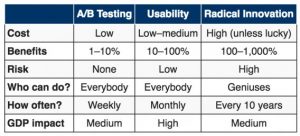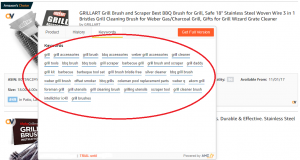Across the big ad/media holding company space, there’s a lot of talk about AI investments and partnerships. But that’s not their only focus.
With last week’s news of IPG’s pioneering integration of Adobe GenStudio into its platform, it became clear that the big ad/media holding companies have subtly different strategies to make generative AI available across their global businesses.
Although some are prioritizing it more than others, we’re witnessing — across the board — the ongoing transformation of agencies into tech brands.
Publicis invests heavily. As we reported back in January, Publicis Groupe plans to evolve into an “intelligent system” through a 300 million Euro investment in AI capabilities. CoreAI is the label for the capabilities Publicis plans to layer across its offerings. It will unify data from 2.3 billion consumer profiles and trillions of digital actions as well as the assets in Publicis’s existing AI platform Marcel.
Dentsu balances investment with partnerships. Dentsu too has honed its in-house AI innovation strategy using a “walled garden” approach, offering employees a secure platform to develop and actualize solutions as a step towards informing all Dentsu’s activities with generative AI. At the same time, it has entered into partnerships with Microsoft and AWS. It was a very early adopter of Microsoft 365 Copilot. It plans to use Amazon Bedrock’s choice of foundation models from third-party AI companies delivered via a single API, as well as Amazon SageMaker to build and deploy machine learning models at scale.
WPP spends heavily too. WPP has said it will find $ 317 million to invest each year in the data and technology underpinning its AI strategy. It was ahead of the curve in acquiring enterprise AI company Satalia in 2021 and appointed its CEO, Daniel Hulme, to the position of WPP Chief AI Officer. Its AI platform, WPP Open, is being used across its organization and also by some major clients.
Omnicom’s acquisition of Flywheel. Yes, Omnicom launched Omni Assist, a genAI solution (developed in partnership with Microsoft) at Cannes last year. But no, it’s not putting all its eggs in the AI basket. The real headline from 2023 was its $ 835 million acquisition of ecommerce platform Flywheel — an investment that outstrips Publicis’ and WPP’s planned AI investments through end of 2025. This was a recognition of the opportunities presented by retail media rather than the opportunities presented by genAI.
The first two digital revolutions in advertising were search and social, said Jared Belsky, CEO of digital agency Acadia. The move into retail media is the beginning of the third. “Its the first time advertising is so close to the point of purchase while being so trackable and targetable. For huge industries ranging from food, to CPG, to retail, to consumer electronics we will see 33% plus of their budgets move this way over time and those are enormous categories.”
The generative AI revolution in the holding company space is certainly with us, but it’s not the only revolution in town.
The post How the big holding companies are handling genAI appeared first on MarTech.
MarTech(4)






